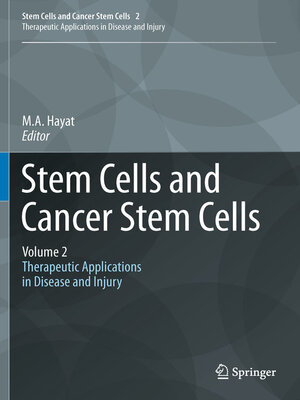Stem Cells and Cancer Stem Cells, Volume 2
ebook ∣ Stem Cells and Cancer Stem Cells, Therapeutic Applications in Disease and Injury, Volume 2 · Stem Cells and Cancer Stem Cells
By M.A. Hayat

Sign up to save your library
With an OverDrive account, you can save your favorite libraries for at-a-glance information about availability. Find out more about OverDrive accounts.
Find this title in Libby, the library reading app by OverDrive.



Search for a digital library with this title
Title found at these libraries:
| Loading... |
As in volume 1 of this series, this volume presents information on stem cells and cancer stem cells; Therapeutic Applications in disease and tissue/organ injury. Methodologies of regenerative medicine and tissue engineering are major components of this volume. Specific stem cells discussed are: human embryonic stem cells, hematopoietic stem cells, cord blood stem cells, human pluripotent stem cells, gliosarcoma stem cells, induced pluripotent stem cells, intestinal stem cells, human thyroid cancer stem cells, tumor stem cells, menstrual stem-like cells, neural stem cells, breast cancer stem cells, allogeneic mesenchymal stem cells, fetal membrane-derived mesemchynmal stem cells, and omental stem cells. The method for isolating bone marrow stromal cells is explained. Method for generating marmoset-induced pluripotent stem cells, using transcription factors, is also explained. Use of stem cell lines in therapeutic applications is discussed. Programming of stem cells is described. Methods for transplantation of stem cells are presented. Use of various types of stem cells for conditions such as stroke, ischemia, heart diseases, Alzhemier's disease, and neurogenerative diseases in general, is explained. For example, generation of human cardiac muscle cells from adipose-derived stem cells is included. Another example is repairing bone defects using mesenchymal stem cells and mesenchymal-derived endothelial cells. Differentiation of new neurons from neural stem cells is described. Method for repairing retina condition using human embryonic stem cells is explained; these cells can induce neural differentiation. Treatment of graft-versus-host disease resulting from hematopoietic stem cell transplantation is elaborated.






